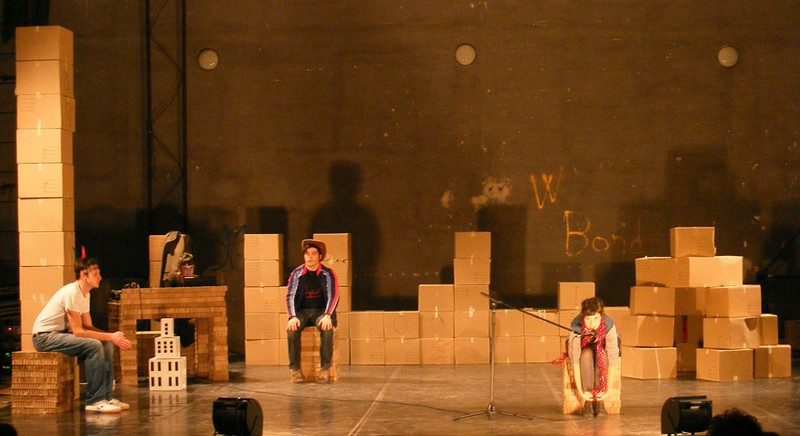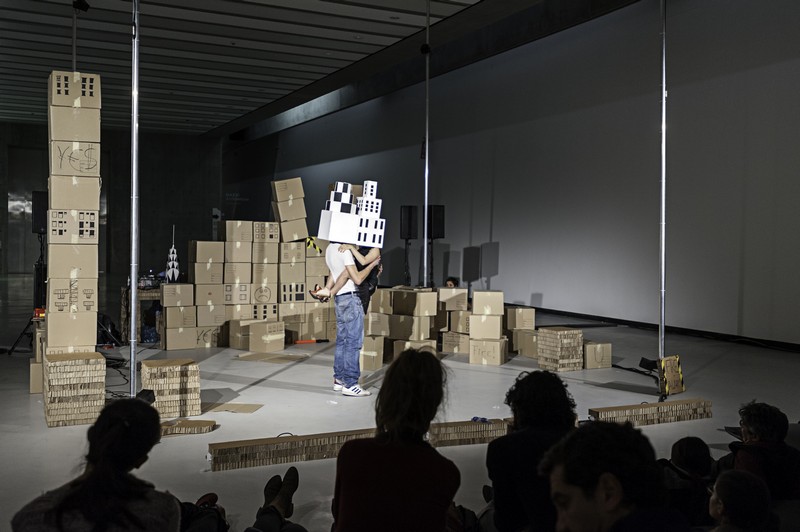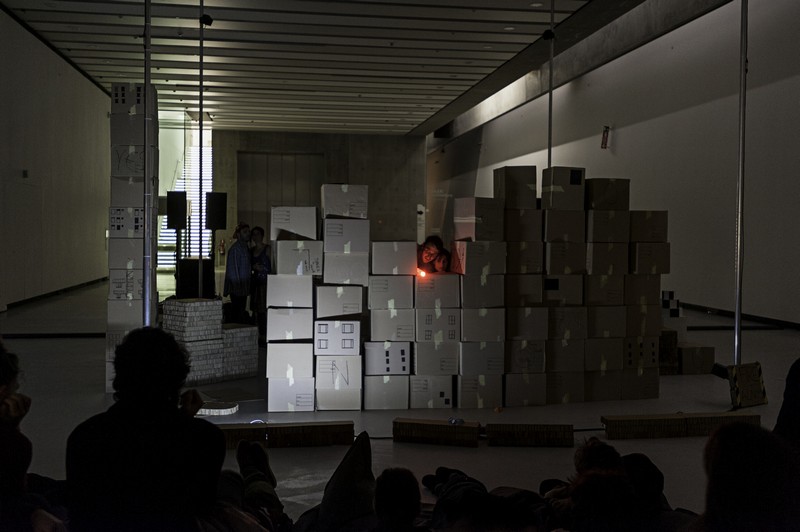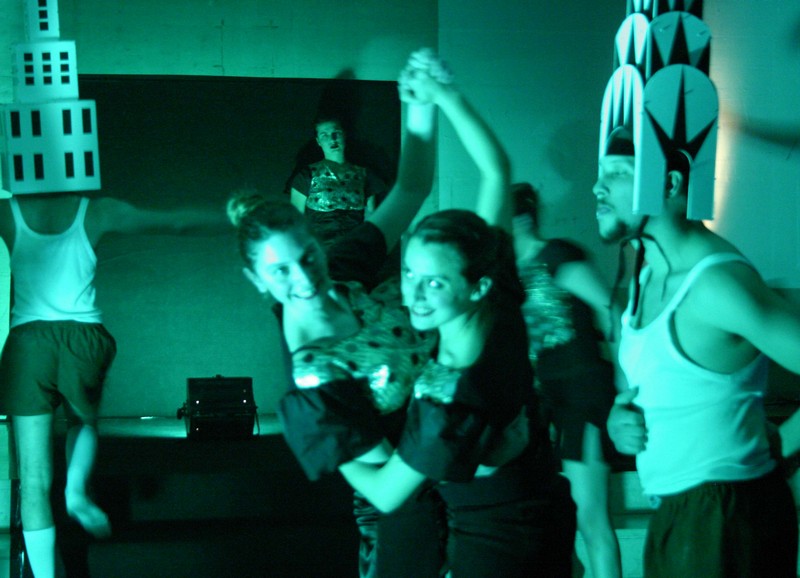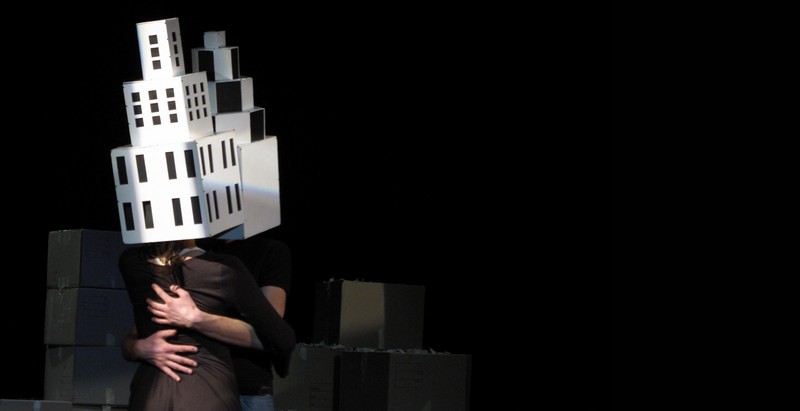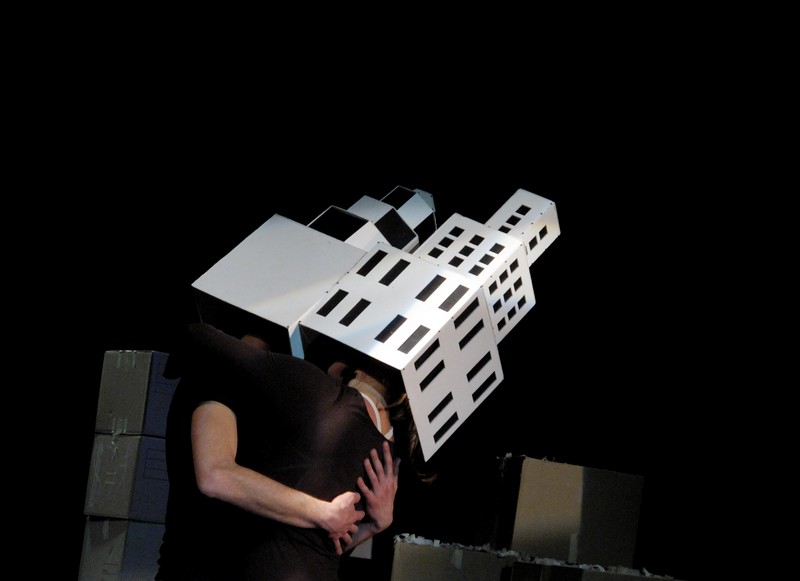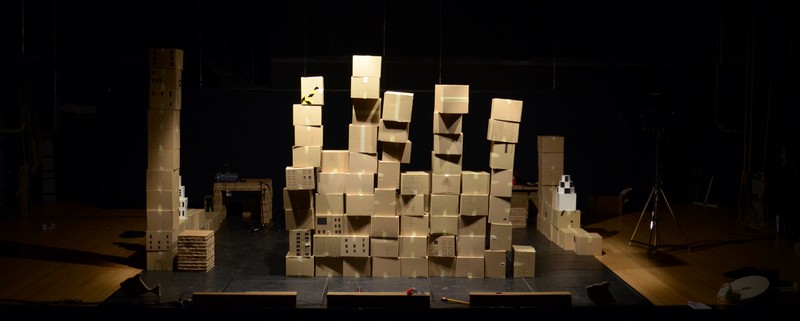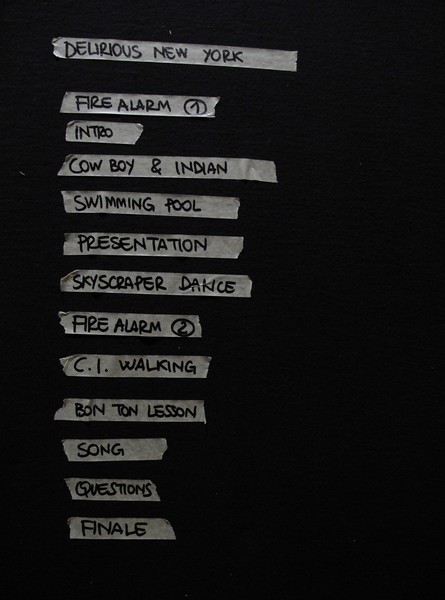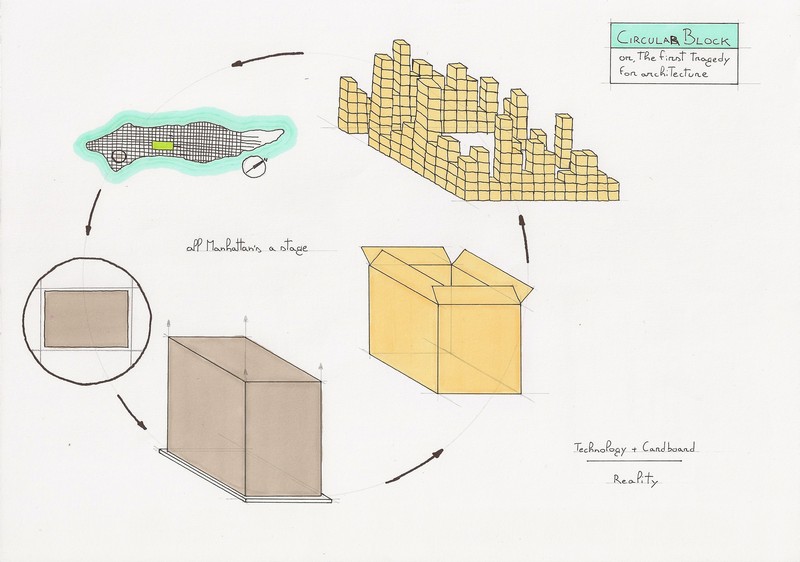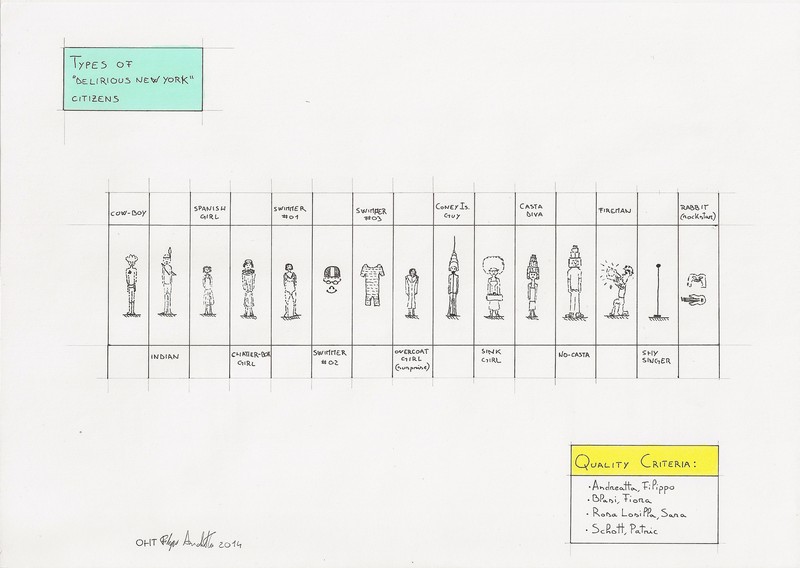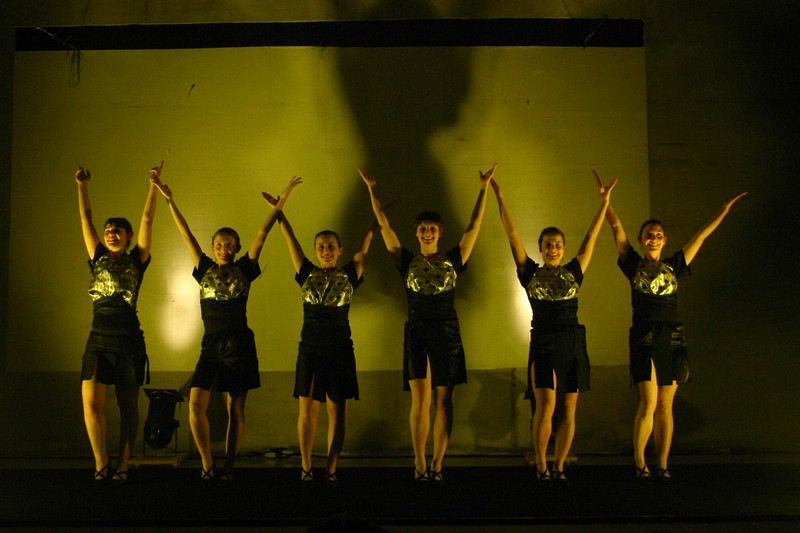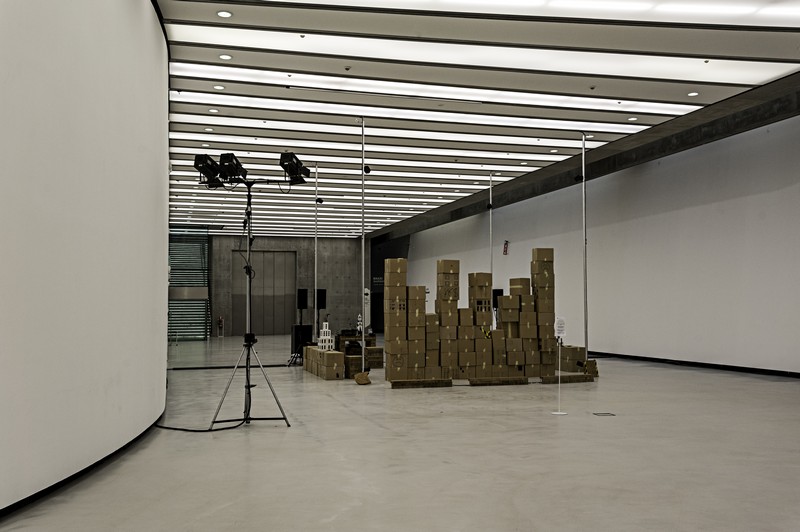content
The show, inspired by the homonymous text by architect Rem Koolhaas, stages a series of urban episodes symbolizing the Manhattanism; a too ambitious theory to be told. Delirious New York is a retroactive manifesto of Manhattan: arch Koolhaas argues that the city's architectural grid should not be analyzed by studying the buildings that compose it, but by investigating the psychology of those who built them. Therefore, the basis of the architectural delirium of New York is imagination, which is used here as a glue of clashing urban episodes.
The audience witness to a theatrical patchwork of images that burst into a process of free and personal association entrusted to the mind of the onlooker. The show hides a survey on human behaviour within the contemporary city: on stage are four people who, despite speaking the same language or different ones, can not communicate with each other. Notwithstanding the lack of communication, they still continue to talk to each other, and trying to get something out of this situation without worrying too much how. To emerge is a doubt: that the alacrity with which they try to overtake this lack of communication is a metaphor of their desire for a clearer identity? The question remains open, but the starting point is still a text of contemporary architecture that, like no one else, has succeeded in introducing itself into the genesis of a mythological city like New York City.
year
2010
running time
0:53:00.0
genre
theatre
press
Living Corriere > anteprima, n 09 2017
Krapp's Last Post > Delirious New York. OHT e il fantastico metropolitano, 29.IV.2016
la Repubblica > La città che nasce dalla fantasia, 20.IV.2016
D Donna > video, OHT Delirious New York, 19.IV.2016
Abitare > Rem Koolhaas a teatro, 15.IV.2016
art agenda > OHT, Delirious New York, 14.IV.2016
sky arte > Rem Koolhaas, il suo libro-manifesto a teatro, 12.IV.2016
domus > OHT Delirous New York, 10.II.2015
la Repubblica > Milano, Delirious New York, 12.II.2015
Gizmo > Delirious New York a teatro, 12.II.2015
Artribune > Ma quante ne fa Rem Koolhaas?, 11.II.2015
Pagina 99 > ll Delirio di New York in scena al Museo MAXXI, 08.XI.2014
Franz Magazine > Delirious New York: la città a teatro con Filippo Andreatta e OHT, 27.I.2014
Del Teatro > Delirious New York, 28.IV.2011
Trentino > Delirious, quando il teatro incontra l'urbanistica, 07.X.2008
credits
by OHT | Office for a Human Theatre
> idea Filippo Andreatta
> dramaturgy Filippo Andreatta and Ilaria Mancia
> by and with Filippo Andreatta, Fiora Blasi, Sara Rosa Losilla, Patric Schott
> set-design Filippo Andreatta
> light Arnaud Poumarat
> light technician Jacopo pace
> production OHT, Fondazione Caritro, Provincia Autonoma di Trento
> co-production Inteatro
> residency Centrale Fies, REACT! > Santarcangelo dei Teatri
production history
27-28.II.2007 > Venezia, CZ95
03-05.X.2008 > Rovereto, Manifesta 7 - parallel events
19.II.2010 > Trento, Teatro Cuminetti - CSC
17.XII.2010 > Santarcangelo, Teatro del Lavatoio,
06.IV.2011 > Venezia, Teatro Fondamenta Nuove,
20.VII.13 > San Sepolcro, Kilowatt Festival
29.I.14 > Rovereto, AltroPalco
07-08-09.XI.14 > Roma, museo MAXXI
12-13-14-15.II.15 > Milano, APACHE Teatro Litta
15-16-17.IV.16 > Genova, Teatro della Tosse
20-21.IV.16 > Milano, Triennale Teatro dell'Arte
22-23.IV.16 > Rivoli, Castello di Rivoli museo d'arte contemporanea
number of replica
24
